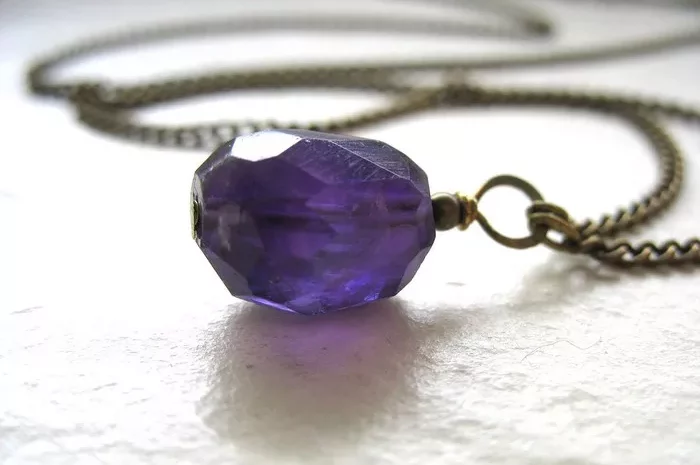Green amethyst is a rare variety of amethyst, a gemstone belonging to the quartz family. Unlike its more common purple counterpart, green amethyst displays a striking green hue, which can range from a subtle mint green to a more vivid emerald green. This unique coloration is often achieved through heat treatment or irradiation processes, which alter the internal structure of the quartz to reveal the hidden green tones.
Natural vs. Treated Green Amethyst
In the world of gemstones, natural green amethyst is exceptionally rare. Most green amethyst on the market today has undergone some form of treatment to enhance its color. These treatments are generally accepted within the gemstone industry, but it’s important for consumers to be aware of the distinction between natural and treated stones, as it can significantly affect their value.
Natural green amethyst, if found, would likely fetch a very high price due to its rarity and unique aesthetic appeal. However, treated green amethyst, while still beautiful and valuable, is generally more affordable and accessible to the average consumer.
Determining the Value of Green Amethyst
The value of green amethyst is influenced by several factors, including its color, clarity, cut, carat weight, and treatment status.
Color
Hue and Saturation: The intensity and purity of the green hue play a crucial role in determining the value of green amethyst. A vivid, emerald-like green is highly desired and commands a higher price than a more muted or faded green.
Color Distribution: Even color distribution throughout the gemstone is also important. Stones with patchy or uneven coloring are less valuable than those with a consistent, uniform green hue.
Clarity
Inclusions and Flaws: Like other gemstones, green amethyst can contain inclusions or flaws that affect its clarity. Stones with fewer and less visible inclusions are more valuable.
Transparency: The degree of transparency, or translucence, of the gemstone also impacts its value. Highly transparent green amethyst is more sought-after and valuable than opaque stones.
Cut
Shape and Symmetry: The shape and symmetry of the cut can greatly influence the appearance and value of green amethyst. Well-cut stones with clean lines and good proportions are more visually appealing and thus more valuable.
Polish: The quality of the polish on the gemstone’s surface is also important. A smoothly polished stone will reflect light better, enhancing its brilliance and value.
Carat Weight
Generally speaking, larger gemstones are more valuable than smaller ones, as they are rarer and more difficult to find. However, this is not always the case with green amethyst, as the quality of the stone (color, clarity, cut) can sometimes outweigh the importance of size.
Treatment Status
Natural vs. Treated: As mentioned earlier, natural green amethyst is extremely rare and thus commands a higher price than treated stones. However, treated green amethyst can still be a beautiful and valuable option for those seeking a unique and affordable gemstone.
Stability of Treatment: The stability and permanence of the treatment process also play a role in determining value. Stones that have undergone stable treatments that are unlikely to fade or change over time are more valuable than those with less stable treatments.
Market Trends and Pricing
The pricing of green amethyst can vary widely depending on the factors mentioned above, as well as market conditions and consumer demand. In general, treated green amethyst is more affordable than natural stones, with prices ranging from a few dollars per carat for lower-quality stones to several hundred dollars per carat for high-quality, well-cut stones.
Natural green amethyst, if found and certified as natural, would likely fetch a much higher price, potentially reaching into the thousands of dollars per carat for exceptional stones. However, due to its rarity, natural green amethyst is not commonly seen on the market and is often sought after by collectors and investors.
Buying Tips for Consumers
When shopping for green amethyst, consumers should keep the following tips in mind:
- Seek Professional Advice: Consult with a reputable jeweler or gemologist who can provide guidance on the quality and value of the stones you’re considering.
- Ask About Treatment: Be sure to inquire about whether the green amethyst you’re interested in is natural or treated. If treated, ask about the stability and permanence of the treatment.
- Inspect the Stone: Look closely at the stone under different lighting conditions to assess its color, clarity, and cut. Check for any visible inclusions or flaws.
- Compare Prices: Shop around and compare prices from different jewelers to ensure you’re getting a fair deal.
- Request Certification: If possible, request a certification or appraisal from a reputable gemological laboratory to verify the quality and authenticity of the stone.
Conclusion
Green amethyst is a rare and beautiful gemstone that can add a unique touch of color to any jewelry collection. While natural green amethyst is exceptionally rare and highly valued, treated stones offer a more affordable option for those seeking a similar aesthetic appeal. By understanding the factors that influence the value of green amethyst and following some basic buying tips, consumers can make informed decisions when shopping for this unique gemstone.
Related topic:
- What is Amethyst Used for in Jewelry?
- The Ideal Placement and Value Appreciation of Amethyst in Jewelry
- Can You Wear Amethyst and Yellow Sapphire Together?


